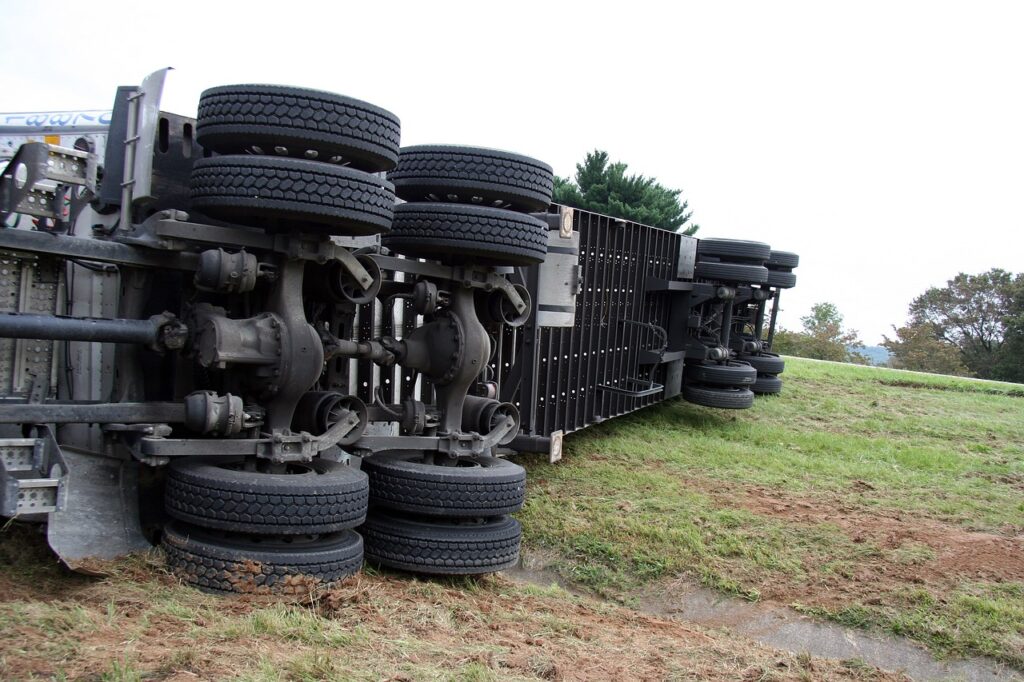Truck accidents are among the most dangerous types of road incidents, causing significant damage to property and life. With their large size and weight, trucks pose a serious threat to other road users, particularly when safety measures are not followed. In this blog, we’ll explore the hidden dangers, news and insights of truck accidents and provide tips on how to stay safe when sharing the road with these large vehicles.
The Importance of Contacting a Lawyer After a Truck Accident
In the aftermath of a truck accident, seeking legal assistance is crucial. Truck accidents often involve multiple parties—drivers, trucking companies, and insurers—making the legal process complex. A truck accident lawyer can help you navigate these complexities, ensuring that your rights are protected and you receive proper compensation for medical expenses, lost wages, and other damages. They can also handle negotiations with insurance companies and gather vital evidence. Without legal representation, you may be at a disadvantage when facing powerful trucking corporations and their insurance providers.
The Sheer Size and Weight of Trucks
One of the primary reasons truck accidents are so dangerous is due to the sheer size and weight of the vehicles involved. Trucks can weigh up to 80,000 pounds when fully loaded, and their size can make it difficult for them to maneuver quickly or stop in time to avoid collisions. This means that even at low speeds, trucks have the potential to cause catastrophic damage to smaller vehicles. Drivers of passenger cars and motorcycles are particularly vulnerable in crashes with trucks due to the size disparity, and the impact can often result in severe injuries or fatalities.
In addition to their size, trucks often carry heavy cargo, which can shift during transit, causing instability. This makes it crucial for truck drivers to follow proper loading procedures and for other road users to maintain a safe distance, allowing trucks enough space to operate safely.
Limited Visibility and Blind Spots
Another hidden danger of truck accidents lies in their limited visibility. Trucks have large blind spots, often referred to as “no-zones,” where the driver cannot see other vehicles. These blind spots exist on all sides of the truck but are particularly pronounced on the sides and directly behind the vehicle. When a car or motorcycle is in one of these no-zones, the truck driver may not realize it, leading to dangerous lane changes or sudden maneuvers.

To stay safe, drivers should avoid lingering in a truck’s blind spots for extended periods. A general rule of thumb is that if you cannot see the truck driver’s mirrors, they cannot see you. This means staying visible and providing trucks with plenty of room to change lanes or maneuver.
Longer Stopping Distances
Trucks require much longer stopping distances compared to passenger vehicles due to their weight and momentum. At highway speeds, it can take a fully loaded truck nearly double the distance to come to a complete stop. This becomes even more dangerous in adverse weather conditions, such as rain or snow, when road traction is reduced.
Drivers must be aware of this increased stopping distance and avoid cutting in front of trucks abruptly. Cutting off a truck or forcing it to brake suddenly can result in a rear-end collision, which is often devastating given the size and force involved. It’s always safer to leave extra space between your vehicle and a truck, particularly in heavy traffic or inclement weather.
Fatigue and Long Hours for Truck Drivers
The trucking industry is notorious for demanding long hours from drivers, often leading to fatigue. Fatigue is one of the leading causes of truck accidents, as drowsy driving impairs reaction times, decision-making, and overall awareness. Although federal regulations limit the number of hours a truck driver can be on the road without rest, some drivers may still push these limits due to tight deadlines or pressure from employers.
When sharing the road with trucks, it’s important to remain vigilant for signs of a drowsy driver. Swerving, drifting into other lanes, or inconsistent speeds can be indications that a truck driver may be fatigued. If you notice any of these signs, it’s best to increase your distance from the truck and report the behavior if necessary.
Truck Maintenance Issues
Maintenance issues are another hidden danger that contributes to truck accidents. Trucks travel thousands of miles weekly, and without regular maintenance, parts can wear down, increasing the risk of mechanical failures. Brake failures, tire blowouts, and engine malfunctions are just a few common maintenance-related issues that can cause accidents.
While drivers cannot control how well a truck is maintained, they can protect themselves by being cautious around trucks that appear to have mechanical issues. For example, if you notice a truck with a smoking tire, missing headlights, or erratic movements, it’s best to give it a wide berth. Staying alert to signs of poor maintenance can help you avoid potential accidents caused by truck malfunctions.
Weather and Road Conditions
Weather and road conditions play a significant role in truck accidents. Trucks are more susceptible to losing control in bad weather due to their size and weight. Wet or icy roads can cause trucks to skid or jackknife, while strong winds can make it harder for drivers to maintain control, especially in high-profile trucks like semi-trailers.

If you’re driving in poor weather conditions, take extra precautions around trucks. Reduce your speed, increase following distance, and avoid sudden maneuvers that could put you in a truck’s path. Remember that truck drivers have a harder time controlling their vehicles in adverse conditions and giving them space is essential for your safety.
Image source: https://pixabay.com/photos/truck-heavy-load-tractor-transport-2920533/
Truck accidents present unique dangers that every road user should be aware of. The size and weight of trucks, their limited visibility, and the long stopping distances all contribute to the severity of these accidents. By understanding the risks and taking appropriate precautions, drivers can significantly reduce their chances of being involved in a truck-related accident. Staying visible, maintaining safe distances, and remaining alert are key strategies for staying safe on the road when sharing it with trucks.



